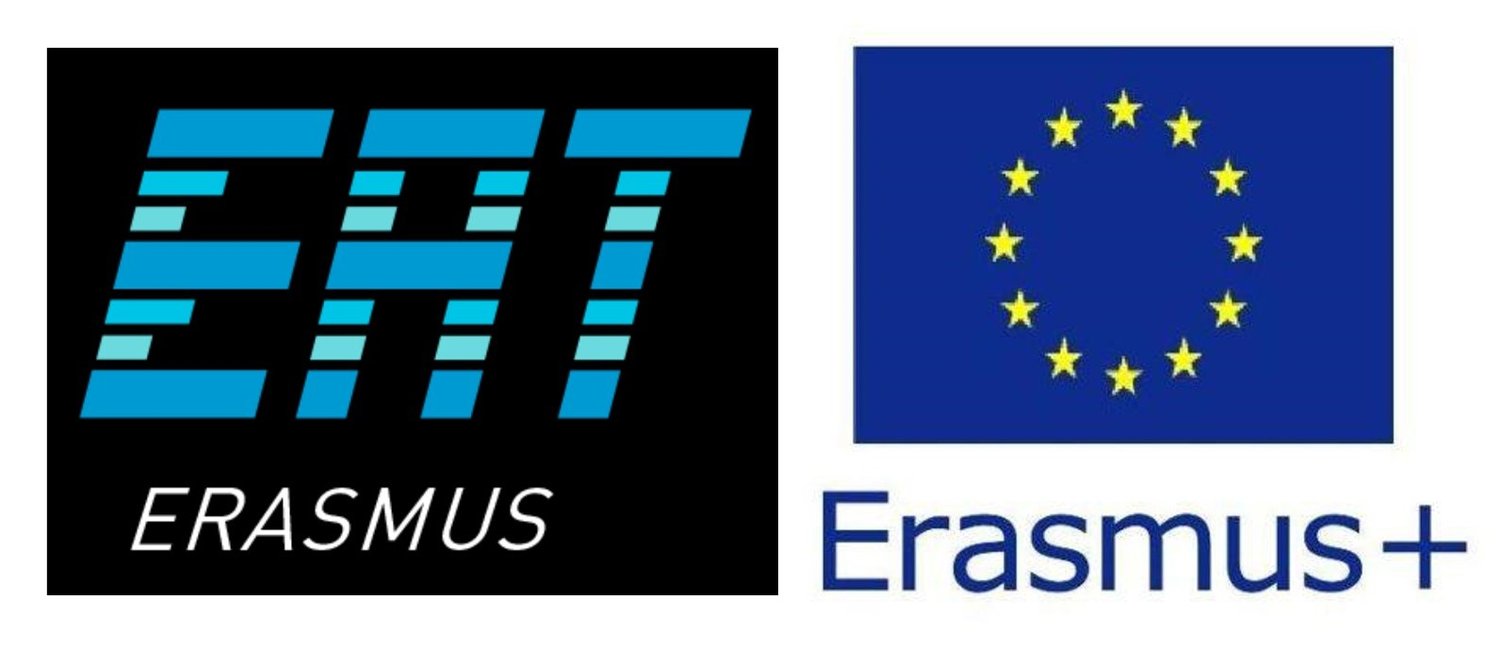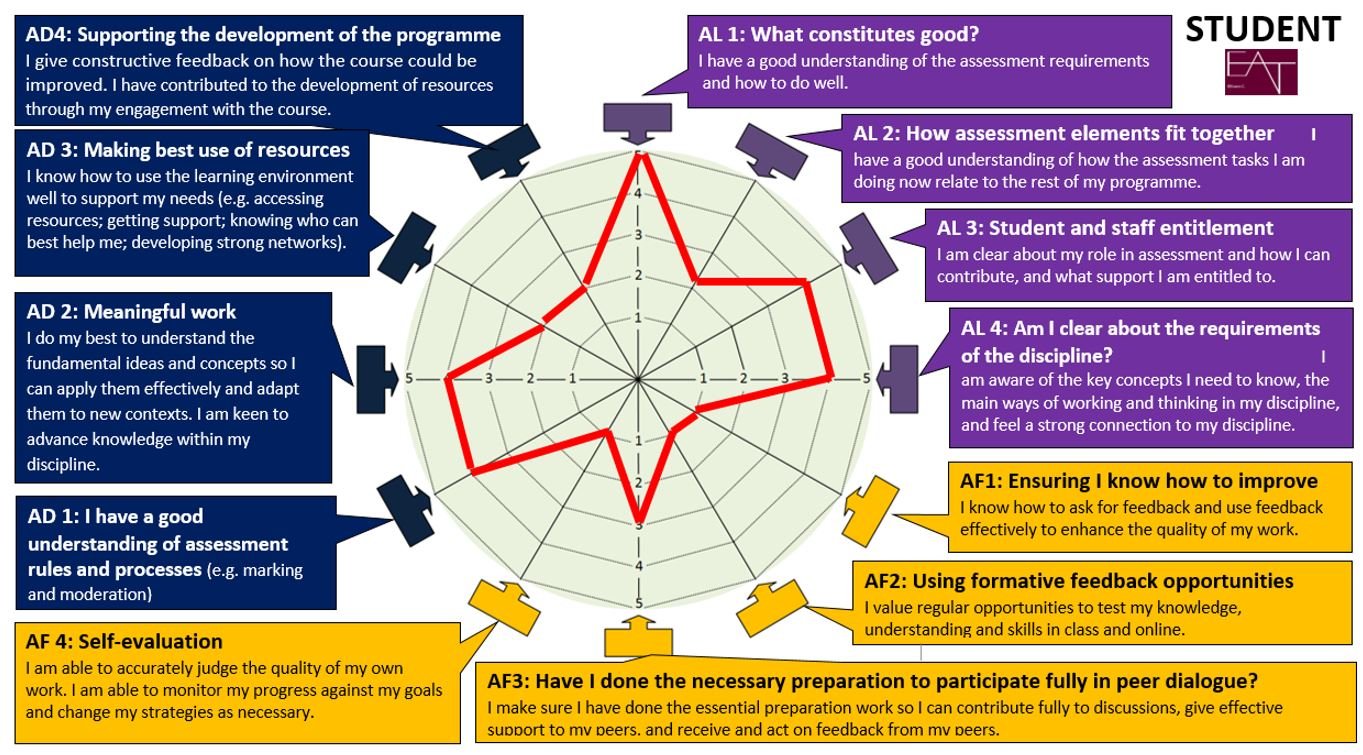Appendices
Selected appendices from the EAT Framework have been included in this report. To adapt the EAT Wheel/Web go to the ERASMUS Version of the Framework using the hyperlink or go to eatframework.com to access all versions.
Notes on using the EAT Wheel/Web to assess student and educator views on engagement in assessment.
(i) Appendices B and C include educator and student versions of the framework.
(ii) Appendix F can be used with educators to consider the different ways in which student engagement is encouraged through assessment design.
(iii) The EAT Wheel/Web diagrammatically illustrates 12 sub-dimensions of assessment and feedback practice.
Using the EAT Survey Scale (EAT-SS) Students can be asked to assess their level of engagement with assessment in each of these 12 sub-dimensions on a scale of 1 – 5 (1 = minimal engagement to 5 = full engagement).
This activity can be undertaken at various points during the academic year to support understandings of assessment processes and roles in assessment, and to explore the relationship between perceptions of engagement and outcomes, and for different groups.
Educators can use the Framework to assess the quality of curriculum design (and extent to which it enables students to self-regulate) in attending to each of the 12 sub-dimensions. It is possible to focus on 1 key area and relate to the other 11 areas –in looking to ensure integration of all activities.
(iv) Appendix I can be used to look at facilitators and barriers to engagement with assessment. Post it notes/ clickers/online polls can collate this information. Changes in students concerns across a module can be mapped to inform targeted support.
Scoring Eat
Recapping on use of EAT-SS
Use to assess students’ attitudes to engagement at the beginning of a course.
Use to assess changes in students’ attitudes to their engagement in assessment throughout a course/programme.
Use with educators to examine strengths and weaknesses in course design.
Compare educators’ perceptions of their courses in enabling engagement.
Compare student and educator perceptions of engagement opportunities.
Consider levels of student engagement and impact on outcomes.
Consider levels of educator engagement and student outcomes







